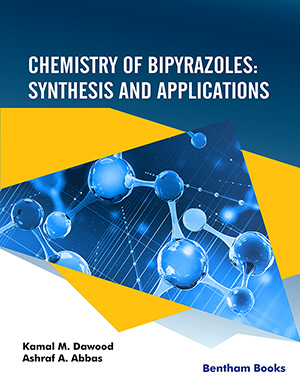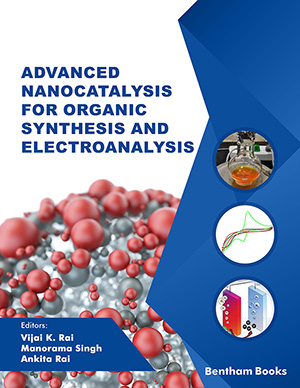
Abstract
Oleanolic acid (OA) is a pentacyclic triterpenoid compound naturally found in plant kingdom. OA possesses several biological activities, which make it an interesting compound for scientists working in the field of pharmacy and new drugs design and development. The compound exhibits anti-inflammatory and anti-oxidative effects in vitro and in vivo, which probably determine its dual function - cytoprotective and cytotoxic/cytostatic activity. In this study, we focused on the presentation of molecular mechanisms of the compound’s action to emphasize its multifunctional character. Due to multiple pharmacological properties of the triterpenoid, it could be used to prevent the majority of the most common diseases of civilization i.e. cancer, cardiovascular diseases, atherosclerosis or diabetes. However, because of its relatively weak activity it may serve as a starting material for the synthesis of more potent chemical compounds.
Keywords: Anti-inflammatory activity, antioxidant activity, antitumor activity, cytoprotective activity, oleanolic acid.
Mini-Reviews in Organic Chemistry
Title:Molecular Mechanisms of Biological Activity of Oleanolic Acid - A Source of Inspiration for A New Drugs Design
Volume: 11 Issue: 3
Author(s): Anna Paszel-Jaworska, Aleksandra Romaniuk and Maria Rybczynska
Affiliation:
Keywords: Anti-inflammatory activity, antioxidant activity, antitumor activity, cytoprotective activity, oleanolic acid.
Abstract: Oleanolic acid (OA) is a pentacyclic triterpenoid compound naturally found in plant kingdom. OA possesses several biological activities, which make it an interesting compound for scientists working in the field of pharmacy and new drugs design and development. The compound exhibits anti-inflammatory and anti-oxidative effects in vitro and in vivo, which probably determine its dual function - cytoprotective and cytotoxic/cytostatic activity. In this study, we focused on the presentation of molecular mechanisms of the compound’s action to emphasize its multifunctional character. Due to multiple pharmacological properties of the triterpenoid, it could be used to prevent the majority of the most common diseases of civilization i.e. cancer, cardiovascular diseases, atherosclerosis or diabetes. However, because of its relatively weak activity it may serve as a starting material for the synthesis of more potent chemical compounds.
Export Options
About this article
Cite this article as:
Paszel-Jaworska Anna, Romaniuk Aleksandra and Rybczynska Maria, Molecular Mechanisms of Biological Activity of Oleanolic Acid - A Source of Inspiration for A New Drugs Design, Mini-Reviews in Organic Chemistry 2014; 11 (3) . https://dx.doi.org/10.2174/1570193X1103140915111839
| DOI https://dx.doi.org/10.2174/1570193X1103140915111839 |
Print ISSN 1570-193X |
| Publisher Name Bentham Science Publisher |
Online ISSN 1875-6298 |
Call for Papers in Thematic Issues
Active Alkaloids: Structure, Mechanism of Action, Chemical Synthesis, and Biosynthesis
The scope of this topic encompasses the structure, mechanism of action, chemical synthesis, and biosynthesis of active alkaloids. Alkaloids, a class of nitrogen-containing organic compounds with alkaline properties, originate from a diverse array of sources. Many alkaloids exhibit significant biological activities and serve as key constituents in numerous medicinal plants. ...read more
Advancement in Petroleum Geochemistry
The scope of the thematic issue on advancements in petroleum geochemistry encompasses a broad range of cutting-edge research and technological innovations. This issue aims to highlight the latest developments in understanding the chemical and physical properties of petroleum and its geological formations. Key areas of focus include: Unconventional Resources: Exploring ...read more
Advancements in Synthesis of Bioactive Compounds
This thematic issue focuses on elucidating advanced synthetic strategies for bioactive compounds, with the primary objective of deepening understanding of the rational design and construction of target molecules. The exploration encompasses a diverse range of techniques, established name reactions, and cutting-edge synthetic methodologies. Specifically, the issue delves into the synthesis ...read more
Advances in Sustainable Synthesis and Applications of Cyclic Carbonates: From Green Chemistry to Advanced Materials
Cyclic carbonates have become a focus of attention because of their potential in sustainable chemistry, energy solutions, and advanced materials. Recent breakthroughs in their synthesis emphasize the use of CO₂ as a renewable feedstock, which is a step toward reducing carbon emissions. New catalytic processes, including both traditional metal catalysts ...read more
Related Journals
 53
53
- Author Guidelines
- Graphical Abstracts
- Fabricating and Stating False Information
- Research Misconduct
- Post Publication Discussions and Corrections
- Publishing Ethics and Rectitude
- Increase Visibility of Your Article
- Archiving Policies
- Peer Review Workflow
- Order Your Article Before Print
- Promote Your Article
- Manuscript Transfer Facility
- Editorial Policies
- Allegations from Whistleblowers
Related Articles
-
Deletion of Endoplasmic Reticulum Stress-Induced CHOP Protects Microvasculature Post-Spinal Cord Injury
Current Neurovascular Research Advances in Dopamine D1 Receptor Ligands for Neurotherapeutics
Current Topics in Medicinal Chemistry Angiotensin Converting Enzyme Inhibitors and Angiotensin Receptor Blockers in the Treatment of Hypertension: Should they be Used Together?
Current Vascular Pharmacology Neuroprotective Role of Agmatine in Neurological Diseases
Current Neuropharmacology Endothelium Dependent Cardiovascular Effects of the Chromogranin A-Derived Peptides Vasostatin-1 and Catestatin
Current Medicinal Chemistry Involvement of Leukotriene Pathway in the Pathogenesis of Ischemia- Reperfusion Injury and Septic and Non-Septic Shock
Current Vascular Pharmacology Benefits of SGLT2 Inhibitors Beyond Glycemic Control – A Focus on Metabolic, Cardiovascular and Renal Outcomes
Current Diabetes Reviews Angiotensin Converting Enzyme Inhibitor in Coronary Artery Bypass Surgery
Drug Design Reviews - Online (Discontinued) Bioavailability Through PepT1: The Role of Computer Modelling in Intelligent Drug Design
Current Computer-Aided Drug Design Nociceptin/Orphanin FQ Peptide Receptors: Pharmacology and Clinical Implications
Current Drug Targets Heart Rate Variability Indexes in Dementia: A Systematic Review with a Quantitative Analysis
Current Alzheimer Research Hirsutism in Polycystic Ovary Syndrome: Pathophysiology and Management
Current Pharmaceutical Design Crystallization and Preliminary X-Ray Diffraction Studies of Two Myotoxic Lys49-Phospholipases A2 Complexed with α-Tocopherol
Protein & Peptide Letters Clinical Trials for Acute Kidney Injury: Design Challenges and Possible Solutions
Current Drug Targets Neural Control of Blood Pressure: Focusing on Capsaicin-Sensitive Sensory Nerves
Cardiovascular & Hematological Disorders-Drug Targets Gene Polymorphism of Angiotensin II Type 1 and Type 2 Receptors
Current Pharmaceutical Design Can Tea Consumption be a Safe and Effective Therapy Against Diabetes Mellitus-Induced Neurodegeneration?
Current Neuropharmacology Genetics and Personalized Medicine in Antidepressant Treatment
Current Pharmaceutical Design New Oral Antihistamines in Pediatrics and Safety of Antihistamines in Children
Current Medicinal Chemistry - Anti-Inflammatory & Anti-Allergy Agents Mechanisms of Fetal and Neonatal Renal Impairment by Pharmacologic Inhibition of Angiotensin
Current Medicinal Chemistry
























